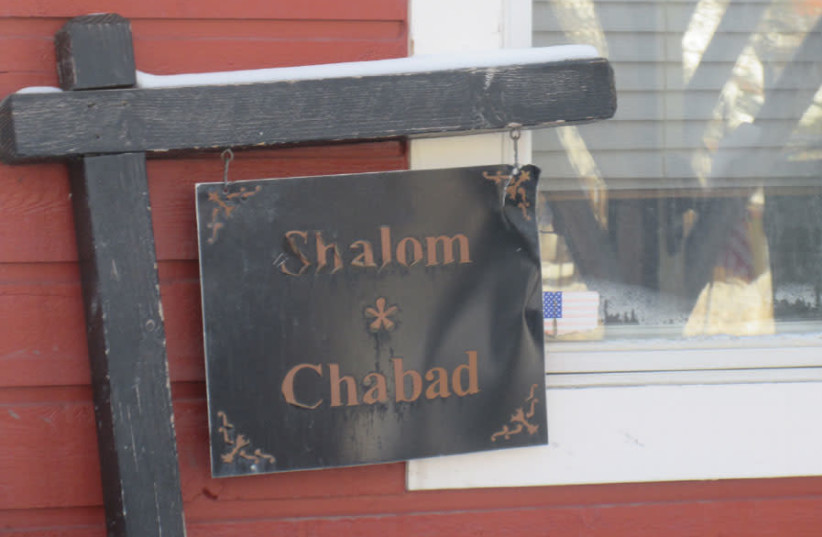A decline in the number of rabbinic students in the non-orthodox streams, as well as the rise in the number of young men from the Chabad movement that have recently been ordained, highlights a fascinating trend of religious Jewish life in the US.
On Friday, 147 candidate rabbis and their families gathered from all over the world in Morristown, NJ, to honor the graduating class of new rabbis at the Rabbinical College of America (RCA). The ceremony called Chag Hasmicha (the ordination holiday), takes place once every few years.
With enrollment at similar rabbinic programs across non-Orthodox Jewish denominations dwindling in recent years, this ceremony is a sign of the rising number of American Jews who participate in the events of this hasidic movement, as well as a growing number of rabbis across the country.
In 2023, non-Orthodox Jewish groups ordained about 100 rabbis combined with the Conservative movement’s Jewish Theological Seminary graduating 14, The Reform movement’s Hebrew Union College with 35 graduates, Hebrew College with 14 graduates, the Reconstructionist Rabbinical College 6 graduates, Academy for Jewish Religion 6 graduates, American Jewish University 9 graduates, Academy for Jewish Religion California 6 graduates and ALEPH: Alliance for Jewish Renewal with 6 graduates.
The ceremony of 147 combines a few classes and takes place every few years. Chabad operates about a dozen such programs across North America and ordains approximately 200 rabbis annually. The RCA in Morristown, NJ has graduated more than 680 rabbis over the last couple of decades.

There are also haredi (ultra-orthodox) rabbinic schools in the US but the numbers of their graduates aren’t public. The largest mainstream orthodox rabbinic school is at the Yeshiva University, where in 2014, they told JTA that they have ordained 225 rabbis over the course of 4 years. Other schools are Ner Yisroel, Hebrew Theological College, Rabbinical Seminary of America and others.
A declining number of Rabbis
In March, Tablet magazine published an article titled, “Wanted: More Rabbis,” where they portrayed the dramatic decrease in rabbinic students at non-orthodox seminaries. They gave an example of a graduating class of the Jewish Theological Seminary in 1982, where the majority of his graduating class, which consisted of about 40 rabbis, were white males who went on to assume pulpit positions.
At the beginning of December, the Conservative movement of Judaism delivered a concerning announcement to numerous synagogues in search of a new rabbi. The message conveyed that a considerable number of synagogues, around 80, were expected to have rabbi vacancies this year. This accounted for approximately one out of every seven synagogues affiliated with the movement. The email also noted that there would likely be a pool of 50 to 60 rabbis actively seeking new positions.
The article added that in 2023, JTS intends to ordain a smaller cohort, comprising 12 rabbis and three cantors. In addition, the 2023 graduates are of all genders, ages and sexual orientations.
According to the 2020 Pew survey about American Jewish life, nearly one in five US Jews (5% often and 12% sometimes) participate in activities or services with Chabad. In addition, 21% say they “rarely” participate in activities or services with Chabad; meaning that they actually probably do participate in an event or prayer service from time to time. Interestingly, one-quarter of Chabad participants (ofter/sometimes) are Orthodox Jews (24%), another quarter identify with Conservative Judaism (26%) and an additional quarter (27%) are actually Reform Jews. 16% of the participants are Jews that do not affiliate with any of these streams.
This is particularly common among Orthodox Jews, with 46% saying they participate in Chabad activities at least sometimes. In comparison, 25% of Conservative Jews, 12% of Reform Jews, and 8% of Jews who do not identify with any particular branch of Judaism participate in Chabad activities at least sometimes.
In 2016, South Dakota received a Chabad rabbi, in a dramatic move, where Chabad had sent rabbis to all 50 US states. And that is just an anecdote to what a report on synagogues in the US found. According to a 2021 research by Joel Kotkin and Edward Heyman, when comparing the numbers of synagogues in the US between 2001 to 2021, the Conservative synagogues dropped from 877 to 558, a 36% decrease; the Reform synagogues had a smaller decrease of 15%, from 963 in 2001 to 816 in 816. Even orthodox congregations have decreased their amount from 1,156 in 2001 to 775 in 2021, a 33% drop. That said, the Chabad-affiliated synagogues have burst from 346 in 2001 to 1,036 in 2021, an increase of an astonishing 199% in two decades.
These new Chabad rabbis won't only be posted in US Jewish communities, but also serve in many cities around the world. Their unique rabbinic ordination program is a culmination of a four-year learning experience, where students learn vital skills that will enable them to excel in their new capacity as rabbinic authorities. According to a statement by Chabad related to the Friday ordination ceremony, the skills learned during these four years include clinical analysis of essential Jewish exegesis, establishing succinct and relevant rulings based on traditional sources, community engagement and counseling.
